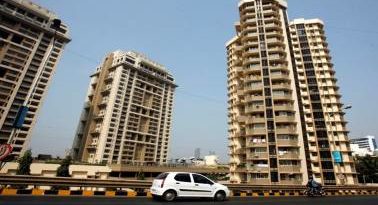71 Years of Independence – Housing for All by 2022?
By,Anuj Puri, Chairman – ANAROCK Property Consultants
When we reflect on India’s 71 year-long independence in context with real estate, one thought overshadows all others – affordable housing. No nation can call itself truly self-sufficient until there is a roof over every head. We can talk about increased transparency and efficiency, but this has true relevance only if it is not just the industry that benefits but also the common man.
Embodying this very basic but profound premise, the Modi Government’s election manifesto of providing Housing for all by 2022 definitely rang all the right bells. Obviously, it boils down to unleashing a massive number of affordable homes, and the Government has certainly gone the extra mile to making that happen. Unfortunately, what we have seen so far is more marketing hype than genuinely affordable housing.
Many developers have climbed on the ‘affordable housing’ bandwagon, but actually the term ‘affordable’ is in most cases just being misused to ostensibly show alignment to the ‘Housing for All’ mission. Of course, builders have been generously applying terms like ‘affordable’ and ‘luxurious’ to projects which were neither affordable nor luxurious long before the Modi Government took charge in 2014.
However, almost every second project today is being purveyed as ‘affordable’ and people can still not afford to buy homes there. There appears to be a big intelligence gap when it comes to the real definition of affordable housing.
What is affordable housing in India?
According to the Ministry of Housing and Urban Poverty Alleviation, affordable housing is defined on the basis of property size, its price, and the buyer’s income. For instance, for the economically weaker section (EWS), an affordable house must measure between 300 and 500 sq. ft. and be priced below Rs 5 lakh, incurring no more than Rs. 4,000-5,000 as monthly EMIs. The income ratio in this case should be of 2:3. These numbers change for lower income group (LIG) and the mid-income groups (MIG).
The central bank’s definition, on the other hand, is based on the loans given by banks to people for building homes or buying apartments. It recently tweaked the incentivised affordable housing loan limits from Rs 28 lakh to Rs 35 lakh in metros and from Rs 20 lakh to Rs 25 lakh in non-metros, provided the overall cost of the home doesn’t exceed Rs 45 lakh and Rs 30 lakh respectively. This move was aimed to give a fillip to low-cost housing for the EWS and LIG groups.
Thus, the definition changes according to the context. Some builders even use the term ‘affordable luxury’, whose validity is again very context and location-based.
How much of the upcoming supply qualifies?
As per ANAROCK data, as many as 22,120 new units were launched in the affordable category (< Rs 40 lakh) in Q2 2018 across the top 7 cities. Affordable housing units comprised a massive 46% of the total new supply in the same quarter. If we break these numbers down further, then nearly 6,530 units were launched in the price bracket < Rs 20 lakh, and the remaining between Rs 20 lakh to Rs 40 lakh.
The supply in the affordable housing segment (< Rs 40 lakh) saw an increase of 100% in Q2 2018 as against the previous quarter. In fact, the overall supply in Q2 2018 was dominated by the affordable segment, with nearly 46% supply in this category which eventually boosted the overall supply growth.




